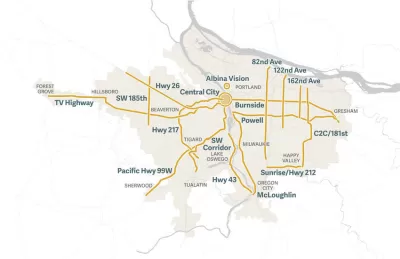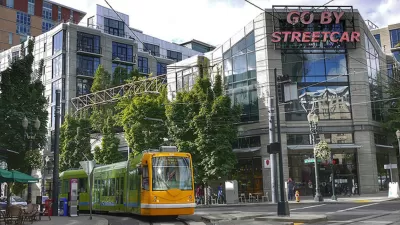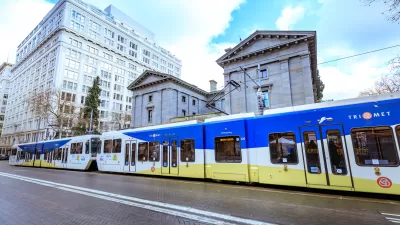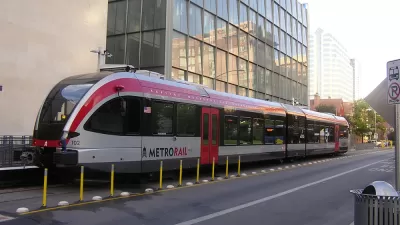The Get Moving 2020 transportation plan will face voters in thee Portland, Oregon region in November.

In July, the Metro Council, the regional planning organization for the Portland, Oregon area, finalized a historic ballot measure for consideration by voters in November. The "Get Moving 2020" plan requires voters to approve a $7 billion bond to fund safety, transit, and other transportation projects in Multnomah, Washington, and Clackamas counties.
"Among other investments, the measure would extend the MAX from downtown Portland to Tualatin, connect a regional rapid bus network, repair and replace bridges, complete sidewalks and pedestrian crossings on major roads, and upgrade thousands of traffic signals and streetlights," reported Chris McGinness back in July.
The bond would be financed with a new .75 percent payroll tax on businesses that the Metro Council claims will only apply to 10 percent of businesses in the region, with an exception for small businesses. That tax provoked opposition to the measure from the Portland Business Alliance, according to McGinnis.
The Metro Council has created a website to provide more information on the expenditure plan and governance of the proposed bond. Here's how that website summarizes the Get Moving 2020 plan:
If the proposed measure passes, 17 primary travel routes, known as corridors, are proposed for projects. Approximately 150 total projects are proposed in these corridors. If the measure passes, proposed corridor projects would include a light rail line in the Southwest Corridor between downtown Portland and Washington County, a rapid regional bus network, bridge replacement and repair, sidewalks and pedestrian crossings, off-street biking and walking facilities, and traffic signal and intersection upgrades.
The website includes additional projects and programs that will be funded by the Get Moving 2020 plan, like bus and MAX passes for youth, safe active transportation projects near schools, and the transition of buses from diesel to electric and low-carbon fuels.
FULL STORY: Metro sends historic bond to the November ballot

Planetizen Federal Action Tracker
A weekly monitor of how Trump’s orders and actions are impacting planners and planning in America.

Congressman Proposes Bill to Rename DC Metro “Trump Train”
The Make Autorail Great Again Act would withhold federal funding to the system until the Washington Metropolitan Area Transit Authority (WMATA), rebrands as the Washington Metropolitan Authority for Greater Access (WMAGA).

The Simple Legislative Tool Transforming Vacant Downtowns
In California, Michigan and Georgia, an easy win is bringing dollars — and delight — back to city centers.

The States Losing Rural Delivery Rooms at an Alarming Pace
In some states, as few as 9% of rural hospitals still deliver babies. As a result, rising pre-term births, no adequate pre-term care and "harrowing" close calls are a growing reality.

The Small South Asian Republic Going all in on EVs
Thanks to one simple policy change less than five years ago, 65% of new cars in this Himalayan country are now electric.

DC Backpedals on Bike Lane Protection, Swaps Barriers for Paint
Citing aesthetic concerns, the city is removing the concrete barriers and flexposts that once separated Arizona Avenue cyclists from motor vehicles.
Urban Design for Planners 1: Software Tools
This six-course series explores essential urban design concepts using open source software and equips planners with the tools they need to participate fully in the urban design process.
Planning for Universal Design
Learn the tools for implementing Universal Design in planning regulations.
Smith Gee Studio
City of Charlotte
City of Camden Redevelopment Agency
City of Astoria
Transportation Research & Education Center (TREC) at Portland State University
US High Speed Rail Association
City of Camden Redevelopment Agency
Municipality of Princeton (NJ)





























